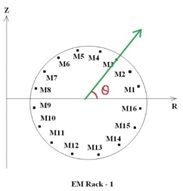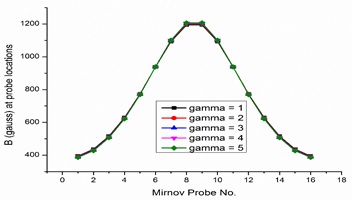Speaker
Description
Tokamak is a toroidal device where plasma is confined by means of appropriate magnetic field configurations. Tokamak plasma is home to several magnetic Instabilities, which can lead to loss of confinement and even termination of plasma delivering very high heat load on the plasma facing components 1. As these magnetic instabilities are dependent on the magnetic field configurations inside the plasma column, a complete understanding of the plasma current density profile, for which these magnetic field configurations appear, is of great importance. Several procedures are already been followed in several tokamaks world-wide to figure out the pattern of plasma current density profile, and several authors have come out with many interesting outcomes, however having a dedicated diagnostics for the same is a necessity 2. Limited by the non-availability of the dedicated diagnostics in ADITYA-U, the main motivation of our work is to use the data from a set of magnetic probes for having the idea of the plasma current density profile scenario. In this work a novel approach has been adopted about such estimations using the data of magnetic pick-up probes in case of tokamak plasma. This work provides a simple method which will be very useful for studying the implications of plasma current density profile on plasma confinement and stability.

This work addresses a rigorous study of the impact of radial current density profile in a toroidal current on the magnetic field at different locations with respect to the tokamak geometry, by means of numerical methods. This study is then extended for the tokamak plasma, where the radial current density profile is given by
j(r)=j_0 (1-r^2/a^2)^γ , (1)
where j_0is the central current density (at plasma centroid), a is the minor radius, r is the radial distance from plasma centroid, and γ is the exponent that decide the exact pattern of radial current variation.
For the validation of our numerical study, we take the data from ADITYA-U tokamak and the corresponding magnetic pick-up probes. ADITYA-U is a medium size tokamak with major and minor radii to be 75 cm and 25 cm respectively. There are two set of Mirnov probes that are installed in ADITYA-U and each of the sets contains sixteen number of pick-up probes, equally spaced on a poloidal plane as shown in Fig 1. This study include a generation of plasma current density profile by means of numerical processes and hence its effect on the pick-ups at these magnetic probes. Generating current density profile according to Eq. 1, magnetic fields are calculated at all sixteen probe locations component-wise. Interestingly, the spatial variation pattern of magnetic field at probe locations remains same with the change of γ, though magnitudes differ from each other at the high magnetic field side (inboard) and low magnetic field side (outboard) of tokamak. Fig. 2 describes such a spatial profile where magnetic field at probe locations are calculated numerically for different profiles and plotted against the probe number. This mismatch of magnetic field values of different plasma current profiles at the inboard and outboard locations gives a clear dependency of magnetic profile pattern on the current density profile and this gives a subtle way to estimate the same in case of actual plasma current.

Similarly, magnetic field profile during plasma discharge is achieved from experimentally acquired data and the magnetic field is extracted in such a way that it only account for the plasma column and this is then analysed for the experimental estimation of the current density profile. Finally, we get several interesting results, followed by some important conclusions about plasma properties of ADITYA-U tokamak. The temporal variation of radial current density profile in an individual discharge and also in different discharges have been compared with other dependent events to justify the estimation of radial current density profile using this simple yet very useful technique.
References:
1 Wesson J Tokamaks 1997 Clarendon Oxford.
2 Soltwisch H 1992 Plasma Physics and Controlled Fusion 34 (12) 1669-1698.
| Affiliation | Institute for Plasma Research |
|---|---|
| Country or International Organization | India |
